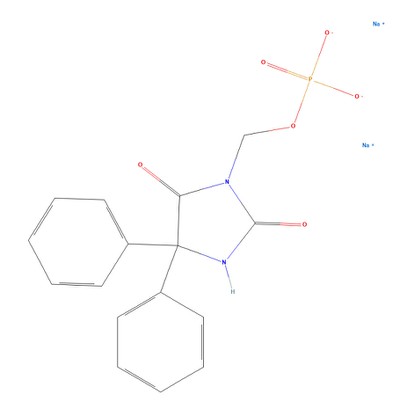
If you have any question, please feel free to email us. We will touch with you as soon as possible.
One Drug Knowledge per Day - fosphenytoin sediment
CAS: 92134-98-0
Chemical formula: C16H16N2NaO6P

1. Specifications, usage, and dosage
Specification: Injection: 50mg/ml (C15H11N2NaO2) (2ml, 10ml)
Usage and Dosage: Before intravenous infusion, dilute Sesquient with 5% glucose or 0.9% injectable saline to 1.5mg phenytoin equivalent/mL to 25mg phenytoin equivalent/mL. The maximum concentration of Sesquient in any solution should be 25mg sodium phenytoin equivalent/mL. When Sesquient is administered intravenously, it needs to be diluted and should be administered at a rate not exceeding 150mg of phenytoin equivalent per minute in adults or 0.4mg of phenytoin equivalent per kilogram per minute in pediatric patients aged 2 to 17.
2. Indications: Used to treat generalized tonic clonic epileptic status, prevent and treat epileptic seizures caused by neurosurgical perioperative and intraoperative conditions.
3. Product advantages
.In November 2020, it was approved by the US FDA as the only type of medication approved by the FDA for optimal on-site storage and rapid distribution in emergency rooms, intensive care units, emergency vehicles, and long-term medical institutions for timely treatment of continuous epileptic seizures;
.Phosphophenyl phenytoin sodium is a prodrug of phenytoin sodium, which can be completely converted into phenytoin in the body, overcoming the adverse reactions caused by phenytoin sodium. It has higher efficacy and safety, and less irritation. It can be injected intramuscularly and intravenously, and does not require cardiac monitoring during intramuscular injection;
.Injectable concentrated solution is the first standard treatment drug in China used to prevent and treat epileptic seizures caused by neurosurgery during the perioperative and intraoperative periods;
.High clinical application value, the concentrated solution retains the advantages of phosphophenytoin sodium injection, overcomes its shortcomings of only being stored and transported at low temperatures, and has better safety.
Tel:+86-020-61855200-902
Fax:+86-020-66392525
Email:info@upharm.cn
Address:12th floor, No. 181, Kexue Avenue, Huangpu District, Guangzhou, China